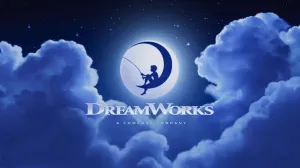Before Season 3 of The Witcher could even premiere, Netflix was quick to confirm that series star Henry Cavill would be departing the series and no longer play Geralt of Rivia. After his departure, the series announced a new star, bringing in Liam Hemsworth to take over the role and don the silk white wig for the show’s final two seasons. News that Cavill had left the series is one that has kept a bit of a cloud over the series, especially since the change was made long before Cavill’s last episodes even premiered. The years since have continued the trend of fandom uncertainty about how it would all play out, and now we have some answers.
Videos by ComicBook.com
The Witcher Season 4, the first batch of episodes with Hemsworth in the lead role and Cavill not involved at all, arrived on Netflix last week. In the time since its debut, as reviews have come in and fans have finally got the chance to see the actor’s take on the character, Netflix has rolled out its first confirmed viewership data for the season. At a glance, it’s clear that The Witcher Season 4 was not immediately as successful as the episodes starring Cavill, but comparisons to previous episodes of The Witcher don’t tell the full story.
The Witcher Season 4 Falls in Viewership After Henry Cavill’s Departure

In the first four days of its release, The Witcher Season 4 had a total of 53.2 million hours viewed and a total of 7.4 million views across Netflix’s global subscriber base (this formula is calculated by Netflix by taking the total hours watched and dividing it by the total runtime of the season’s episodes in hours). When taking the formula for views and applying it to the previous seasons of The Witcher, it reveals how far the viewership for the series has fallen.
The Witcher Season 2, for instance, premiered in December of 2021 and in its first three days racked up a total of 142.43 million hours viewed. After applying the formula, we can see that The Witcher Season 2 managed 18.8 million views in its first few days of release. A slightly trickier approach has to be done for The Witcher Season 3, however, which was split across two volumes with five episodes premiering in June of 2023 and three more arriving in July.
For The Witcher Season 3, Volume 1, the first four days brought in 73,000,000 hours viewed for a total of 15.92 million views. Though at first this seems like a drop in viewership, we have to note that it marked just the first volume of the season, making it a pretty impressive hold from The Witcher Season 2 to The Witcher Season 3. When compared to The Witcher Season 4, however, it paints a dire picture in how much the viewership has fallen.
| The Witcher Season 2 First Week Views | 18.8 million |
| The Witcher Season 3, Volume 1 First Week Views | 15.92 million |
| The Witcher Season 4 First Week Views | 7.4 million |
By comparison, The Witcher series has fallen by fifty percent season over season since Cavill’s departure from the show, but numbers to previous seasons aren’t the only way to fully show how viewership has fallen. When comparing The Witcher Season 4 to other recent Netflix releases, it makes the drop-off look even worse. Nobody Wants This Season 2, for instance, was released the week before and earned 8.6 million views in its first week, even rising in its second week to 9.4 million. To make the stark difference in views slightly more dire, Nobody Wants This is a comedy series with a much lower budget than The Witcher. To compare to another slightly more expensive series though, Wednesday Season 2 premiere earlier this year with a split season, and still wracked up 50 million views in its first week.
For fans who did tune in, though, there is some good news. Season 5 of The Witcher has already been filmed and is set to arrive later on Netflix. Time will tell if audiences have gotten used to Hemsworth’s version of Geralt and if anyone who sat out Season 4 may return to see how it all wraps up.









